Indiens by Bodmer Karl (28 results)
Product Type
- All Product Types
- Books (21)
- Magazines & Periodicals
- Comics
- Sheet Music
- Art, Prints & Posters (7)
- Photographs
- Maps
- Manuscripts & Paper Collectibles
Condition
Binding
Collectible Attributes
- First Edition (1)
- Signed
- Dust Jacket
- Seller-Supplied Images (13)
- Not Print on Demand (28)
Free Shipping
Seller Location
Seller Rating
-
The American Indian / Die Indianer Amerikas / Les Indiens D'amerique
Published by Taschen America Llc (edition Multilingual), 2005
ISBN 10: 3822847380ISBN 13: 9783822847381
Seller: BooksRun, Philadelphia, PA, U.S.A.
Book
Hardcover. Condition: Very Good. Multilingual. Ship within 24hrs. Satisfaction 100% guaranteed. APO/FPO addresses supported.
More buying choices from other sellers on AbeBooks
Used offers from US$ 6.62
-
Indiens, Les
Published by Art Stock, 1998
ISBN 10: 2909808394ISBN 13: 9782909808390
Seller: WorldofBooks, Goring-By-Sea, WS, United Kingdom
Book
Paperback. Condition: Very Good. The book has been read, but is in excellent condition. Pages are intact and not marred by notes or highlighting. The spine remains undamaged.
More buying choices from other sellers on AbeBooks
New offers from US$ 23.54
Used offers from US$ 7.78
Also find Softcover
-
Les indiens
Published by Bibliotheque de l'image, 1996
Seller: Librodifaccia, Alessandria, AL, Italy
Condition: Buone. Francese Condizioni dell'esterno: Buone Condizioni dell'interno: Buone.
-
LES INDIENS
Published by BIBLIOTHEQUE DE L'IMAGE, 1996
Seller: Yves Grégoire, Saint-Grégoire, France
Book
Couverture souple. Condition: Très bon. 96 PAGES-29 CM X 25 CM-(100H).
-
Indiens d'Amérique
Published by Example Product Manufacturer
ISBN 10: 2844590411ISBN 13: 9782844590411
Seller: Lioudalivre, Conches en ouche, France
Book
-
Bibliothèque de l'Image. In-4, 94pp, broché, semi-rigide rempliée éditeur - aquarelles de Karl Bodmer - exemplaire qq peu jauni et usage, bon état général.
-
unterhalb der Darstellung typographisch betitelt und bezeichnet; Honegger Zürich 1845 [Das interessante Blatt an den Rändern leicht finger- und braunfleckig. Am unteren Rand mit drei alten gebräuten Klebestreifen. Der Zustand wurde im Preis berücksichtigt. The fine lithograph a little bit spotted.].
-
SIH-CHIDA & MAHCHSI-KAREHDE. Mandan Indianer: Indiens Mandans: Mandan Indians
Published by Ackerman & Co, London, 1841
Seller: Frey Fine Books, Rougemont, NC, U.S.A.
Print. Condition: Near Fine. ca. 1841. Likely a later printing. Folio, Aquatint print, 17 1/2" x 20 1/2". (Frame: 20 3/4" x 23"). Labeled as Tableau 20. Colors very vibrant. Sheet clean and without foxing. No watermark visible. Framed in a wood frame with gilt inner decorative carving; with glaze. The gilt on the inner carving has rubbed off in several locations, showing the red base layer below. A Near Fine print. (Frame not included. Please inquire further if you really want it). ***Painted by Karl Bodmer, engraved by Hürlimann, and printed by Bougeard, this folio Aquatint print depicts two Mandan Indians standing in full dress with headgear, robes and jewelry. Sih-Chida, or "Yellow feather" stands with Mahchsi-Karehde, or "Flying War Eagle". Both men are members of Mandan upper society. ****.
-
[TWO ORIGINAL LITHOGRAPHS OF NATIVE AMERICANS]: "Tombeaux des indiens sioux" together with "Chef Indien" (title in pencil)
Published by Bertauts, Paris, 1850
Seller: Michael Laird Rare Books LLC, Lockhart, TX, U.S.A.
First Edition
Condition: Very good. First Edition. Lithograph (210 x 163 mm; 8.25" x 6.25") by Eugene LeRoux (1807-1863) after an original design by Karl Bodmer, one of which is on Chine applique, on large folio sheet (447 x 317 mm; 17.5" x 12.25"). Margins with foxing, images in excellent state. FIRST APPEARANCE OF THESE TWO RARE BODMER LITHOGRAPHS, ONE OF WHICH IS A PROOF IMPRESSION ON CHINE APPLIQUE. These images were NOT published in the well known "Voyage dans l'intérieur de l'Amérique du Nord pendant les années 1832-1834" series. Few examples of these lithographs survive in private ownership. The only auction record we have been able to locate is Ader, Paris, 15 Dec. 2020 (lot 63), being a bound album of 271 (!) lithographs -- all proof impressions on Chine, as here -- and of the same size as ours. That album was bound for Edouard Pierre, a Parisian papermaker located on the rue Vivienne, who specialized in creating proofs. It is possible that Pierre was in some way involved in creating the present proof impression. THESE BODMER IMAGES ARE RARELY SEEN, and are basically known only to specialists. Ruud places them in his Appendix D.3, "Images not related to the Atlas tableaux and vignettes but are based on expedition material." 1. "Tombeaux des indiens sioux." A startling depiction of the remains of a Sioux Indian, enshrouded and placed in a burial scaffold positioned about 10 feet off the ground in a tree. A woman in mourning walks away from the viewer, while two other women mourners are seated at the foot of the tree. Ruud was apparently unaware of the fact that LeRoux was the lithographer, and that Bertauts was the publisher. 2. PROOF ON CHINE APPLIQUE. Untitled. At the foot of our lithograph is the pencil inscription: "Chef Indien." Ruud names this lithograph: "Unidentified Piegan Man" -- see Wood, p. 134 and plate 10 for a detailed description of this lithograph. NB: the Newberry example is an ordinary lithograph (i.e. not a proof on Chine), mounted on cardboard which bears the words "J. Geruzet, edit. a Bruxelles." Karl Bodmer (1809-1893) was a celebrated Swiss painter, graphic designer, lithographer, and illustrator. As a young man, he accompanied Prince Maximilian zu Wied-Neuwied to North America on an expedition that was to last 28 months (1832-1834). During this period they followed rivers through Ohio, Missouri and Mississippi. Bodmer painted numerous watercolors which shaped the image of Native Americans that Europeans and Americans alike had of Native Americans. Today Bodmer's lithographs continue to be an important source of information on the costumes, weapons, tools, and manners of Native North Americans. The quality and accuracy of Bodmer's images are arresting, and even today his illustrations are regarded as valuable documentary sources on the Plains Indians. PROVENANCE: Christie's Canada / Montreal Book Auctions, 22-23 April 1970, lot 133. From the Dorothy Sloan Collection of Western Americana. LITERATURE: Karl Bodmer's North American Prints (ed. Brandon K. Ruud). Omaha: Joslyn Art Museum, 2004, pp. 352-353 with reproductions of both images. W. Raymond Wood, Karl Bodmer's Studio Art: The Newberry Library Bodmer Collection, 2002.
-
Punka Indians Encamped on the Banks of the Missouri. Campirende Punka-Indianer. Indiens Poncas Campes.
Published by Ackerman London -1843, 1839
Art / Print / Poster
Hand-coloured aquatint engraving, later printing. From the illustrated 'Travels in the Interior of North America between 1832-34' by Prince Maximilian Alexander Philipp Zu Wied-Neuweid, published in two volumes by Ackermmann in London 1843. The finest work on American Indian life and the American Frontier, it is the result of an epic journey which took place at a time when the mass migrations of settlers and pioneers was about to alter irrevocably the unspoiled West. Karl Bodmer (1809-1893) was engaged by Prince Maximilian (already famed for his earlier explorations in Brazil) to provide a record of his travels among the Plains Indians of North America during 1833-34. His efforts show great versatility and technical virtuosity and give us a uniquely thorough, accomplished and detailed picture of a previously little understood (and soon to vanish) way of life. The most important part of their travels started from St Louis, whence they proceeded up the treacherous Missouri along the line of forts established by the the American Fur Company. At Bellevue they encountered their first Indians, then went on to make contact with the Sioux Tribe, learning and recording their little known ceremonial dances, their powerful pride and dignity. Transfering from the 'Yellow Stone' to another steamer the 'Assiniboine', they continued to Fort Clark, studying there the Mandan, Mintari and Crow Tribes, then the Cree and Assiniboine tribes at Fort Union, the main base of the American Fur Company. On a necessarily much smaller vessel they journeyed through the extraordinary geological scenery of that section of the Missouri to Fort Mackenzie in Montana. Established over a month there a cautious friendship developed with the fearsome Blackfoot Tribe. From this, the westernmost point reached, it was considered too dangerous to continue and the return journey downstream began. The winter brought its own difficulties and discomforts, but Bodmer was still able to execute numerous studies of villages, dances and, especially, the people, who were often intrigued and delighted by his work. The portraits are particularly notable for capturing individual personalities, as well as forming, together with Prince Maximilian's written studies, the primary accounts of what became virtually lost cultures.
-
Saukie and Fox Indians. Saki und Musquake Indianer. Indiens Sakis et Renards.
Published by Ackerman London -1843, 1839
Art / Print / Poster
Uncoloured aquatint engraving, later printing. From the illustrated 'Travels in the Interior of North America between 1832-34' by Prince Maximilian Alexander Philipp Zu Wied-Neuweid, published in two volumes by Ackermmann in London 1843. The finest work on American Indian life and the American Frontier, it is the result of an epic journey which took place at a time when the mass migrations of settlers and pioneers was about to alter irrevocably the unspoiled West. Karl Bodmer (1809-1893) was engaged by Prince Maximilian (already famed for his earlier explorations in Brazil) to provide a record of his travels among the Plains Indians of North America during 1833-34. His efforts show great versatility and technical virtuosity and give us a uniquely thorough, accomplished and detailed picture of a previously little understood (and soon to vanish) way of life. The most important part of their travels started from St Louis, whence they proceeded up the treacherous Missouri along the line of forts established by the the American Fur Company. At Bellevue they encountered their first Indians, then went on to make contact with the Sioux Tribe, learning and recording their little known ceremonial dances, their powerful pride and dignity. Transfering from the 'Yellow Stone' to another steamer the 'Assiniboine', they continued to Fort Clark, studying there the Mandan, Mintari and Crow Tribes, then the Cree and Assiniboine tribes at Fort Union, the main base of the American Fur Company. On a necessarily much smaller vessel they journeyed through the extraordinary geological scenery of that section of the Missouri to Fort Mackenzie in Montana. Established over a month there a cautious friendship developed with the fearsome Blackfoot Tribe. From this, the westernmost point reached, it was considered too dangerous to continue and the return journey downstream began. The winter brought its own difficulties and discomforts, but Bodmer was still able to execute numerous studies of villages, dances and, especially, the people, who were often intrigued and delighted by his work. The portraits are particularly notable for capturing individual personalities, as well as forming, together with Prince Maximilian's written studies, the primary accounts of what became virtually lost cultures.
-
Chief of the Cree-Indians. Mahsette-Kuiuab. Chef der Crih Indianer. Chef des Indiens Crih.
Published by Ackerman London -1843, 1839
Art / Print / Poster
Uncoloured aquatint engraving, later printing. From the illustrated 'Travels in the Interior of North America between 1832-34' by Prince Maximilian Alexander Philipp Zu Wied-Neuweid, published in two volumes by Ackermmann in London 1843. The finest work on American Indian life and the American Frontier, it is the result of an epic journey which took place at a time when the mass migrations of settlers and pioneers was about to alter irrevocably the unspoiled West. Karl Bodmer (1809-1893) was engaged by Prince Maximilian (already famed for his earlier explorations in Brazil) to provide a record of his travels among the Plains Indians of North America during 1833-34. His efforts show great versatility and technical virtuosity and give us a uniquely thorough, accomplished and detailed picture of a previously little understood (and soon to vanish) way of life. The most important part of their travels started from St Louis, whence they proceeded up the treacherous Missouri along the line of forts established by the the American Fur Company. At Bellevue they encountered their first Indians, then went on to make contact with the Sioux Tribe, learning and recording their little known ceremonial dances, their powerful pride and dignity. Transfering from the 'Yellow Stone' to another steamer the 'Assiniboine', they continued to Fort Clark, studying there the Mandan, Mintari and Crow Tribes, then the Cree and Assiniboine tribes at Fort Union, the main base of the American Fur Company. On a necessarily much smaller vessel they journeyed through the extraordinary geological scenery of that section of the Missouri to Fort Mackenzie in Montana. Established over a month there a cautious friendship developed with the fearsome Blackfoot Tribe. From this, the westernmost point reached, it was considered too dangerous to continue and the return journey downstream began. The winter brought its own difficulties and discomforts, but Bodmer was still able to execute numerous studies of villages, dances and, especially, the people, who were often intrigued and delighted by his work. The portraits are particularly notable for capturing individual personalities, as well as forming, together with Prince Maximilian's written studies, the primary accounts of what became virtually lost cultures.
-
Indianische Gerathschaften und Waffen. Ustensiles et Armes Indiens
Published by Ackerman & Co, London, 1841
Seller: Alexandre Antique Prints, Maps & Books, Toronto, ON, Canada
Art / Print / Poster
Condition: Very Good. Image Size : 295x430 (mm), 11.625x16.875 (Inches), Platemark Size : , Paper Size : 395x535 (mm), 15.5x21 (Inches), Original Hand Coloring, Aquatint.
-
Offering of the Mandan Indians. Opfer der Mandan Indianer. Offrande des Indiens Mandans.
Published by Ackerman London -1843, 1839
Art / Print / Poster
Uncoloured aquatint engraving, later printing. From the illustrated 'Travels in the Interior of North America between 1832-34' by Prince Maximilian Alexander Philipp Zu Wied-Neuweid, published in two volumes by Ackermmann in London 1843. The finest work on American Indian life and the American Frontier, it is the result of an epic journey which took place at a time when the mass migrations of settlers and pioneers was about to alter irrevocably the unspoiled West. Karl Bodmer (1809-1893) was engaged by Prince Maximilian (already famed for his earlier explorations in Brazil) to provide a record of his travels among the Plains Indians of North America during 1833-34. His efforts show great versatility and technical virtuosity and give us a uniquely thorough, accomplished and detailed picture of a previously little understood (and soon to vanish) way of life. The most important part of their travels started from St Louis, whence they proceeded up the treacherous Missouri along the line of forts established by the the American Fur Company. At Bellevue they encountered their first Indians, then went on to make contact with the Sioux Tribe, learning and recording their little known ceremonial dances, their powerful pride and dignity. Transfering from the 'Yellow Stone' to another steamer the 'Assiniboine', they continued to Fort Clark, studying there the Mandan, Mintari and Crow Tribes, then the Cree and Assiniboine tribes at Fort Union, the main base of the American Fur Company. On a necessarily much smaller vessel they journeyed through the extraordinary geological scenery of that section of the Missouri to Fort Mackenzie in Montana. Established over a month there a cautious friendship developed with the fearsome Blackfoot Tribe. From this, the westernmost point reached, it was considered too dangerous to continue and the return journey downstream began. The winter brought its own difficulties and discomforts, but Bodmer was still able to execute numerous studies of villages, dances and, especially, the people, who were often intrigued and delighted by his work. The portraits are particularly notable for capturing individual personalities, as well as forming, together with Prince Maximilian's written studies, the primary accounts of what became virtually lost cultures.
-
[Idols of the Mandan Indians] Offer der Mandan Indianer. Offrande des Indiens Mandans
Published by Paris and Coblenz, 1842
Seller: Donald A. Heald Rare Books (ABAA), New York, NY, U.S.A.
Art / Print / Poster
Hand-coloured aquatint engraving by Vogel. Titles in German and French. 1st state. A highly atmospheric scene executed by Bodmer during the winter of 1833-1834 when the travelers stayed at Fort Clark on the banks of the upper reaches of Missouri River. The hide-wrapped poles represent the sun and the moon, which in turn are symbols of two of the most powerful Mandan deities: the Lord of Life (creator of all things) and the Old Woman Who Never Dies, who was associated with corn and buffalo. The Mandan standing before the effigies is apparently seeking the help of these sacred beings. In Mandan life no important decisions or undertakings were made without this sort of consultation, which generally involved fasting and offerings or sacrifices. Karl Bodmer's images show great versatility and technical virtuosity and give us a uniquely accomplished and detailed picture of a previously little understood (and soon to vanish) way of life. Swiss-born Bodmer was engaged by Prince Maximilian zu Wied-Neuwied (1782-1867) specifically to provide a record of his travels in North America, principally among the Plains Indians. In the company of David Dreidoppel (Prince Maximilian's servant and hunting companion), their travels in North America were to last from 1832 to 1834. Well-armed with information and advice, the party finally left St.Louis, on the most important stage of their travels, aboard the steamer Yellow Stone on April 10 1833. They proceeded up the treacherous Missouri River along the line of forts established by the American Fur Company. At Bellevue they encountered their first Indians, then went on to make contact with the Sioux tribe, learning of and recording their little known ceremonial dances and powerful pride and dignity. Transferring from the Yellow Stone to another steamer, the Assiniboin, they continued to Fort Clark, visiting there the Mandan, Mintari and Crow tribes, then the Assiniboins at Fort Union, the main base of the American Fur Company. On a necessarily much smaller vessel they journeyed through the extraordinary geological scenery of that section of the Missouri to Fort Mackenzie in Montana, establishing a cautious friendship with the fearsome Blackfeet. From this, the westernmost point reached, it was considered too dangerous to continue and the return journey downstream began. The winter brought its own difficulties and discomforts, but Bodmer was still able to execute numerous studies of villages, dances and especially the people, who were often both intrigued and delighted by his work. The portraits are particularly notable for their capturing of individual personalities, as well as forming a primary account of what was to become virtually lost cultures. Graff 4648; Howes M443a; Pilling 2521; Sabin 47014; Wagner-Camp 76:1.


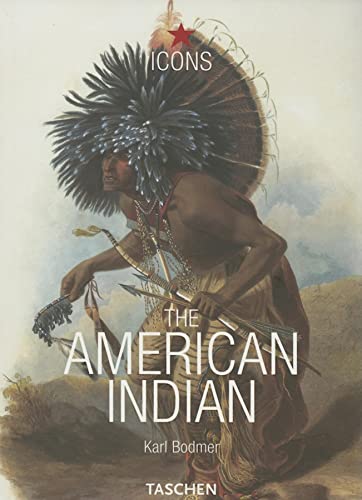
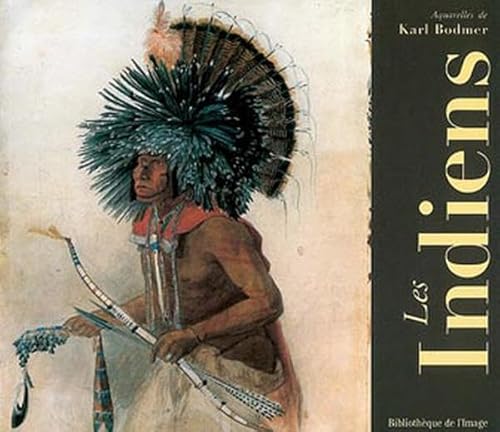
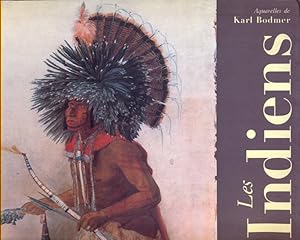


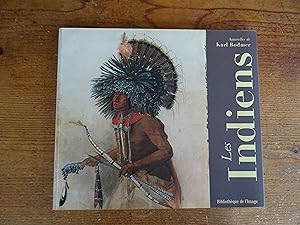
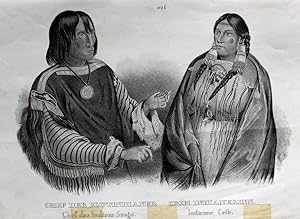
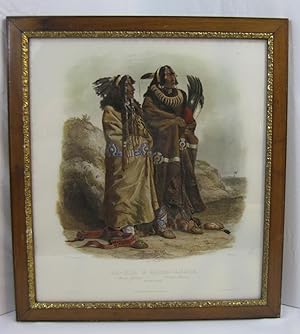
![Seller image for [TWO ORIGINAL LITHOGRAPHS OF NATIVE AMERICANS]: "Tombeaux des indiens sioux" together with "Chef Indien" (title in pencil) for sale by Michael Laird Rare Books LLC](https://pictures.abebooks.com/inventory/md/md30881869965.jpg)
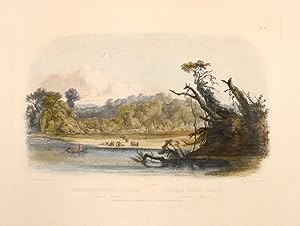
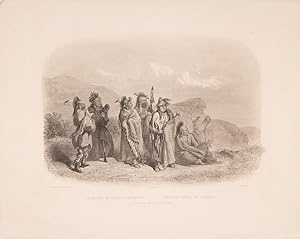

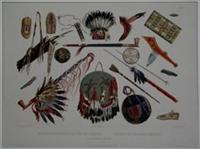
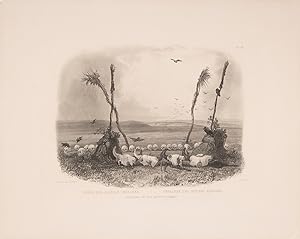
![Seller image for [Idols of the Mandan Indians] Offer der Mandan Indianer. Offrande des Indiens Mandans for sale by Donald A. Heald Rare Books (ABAA)](https://pictures.abebooks.com/inventory/md/md31070876051.jpg)